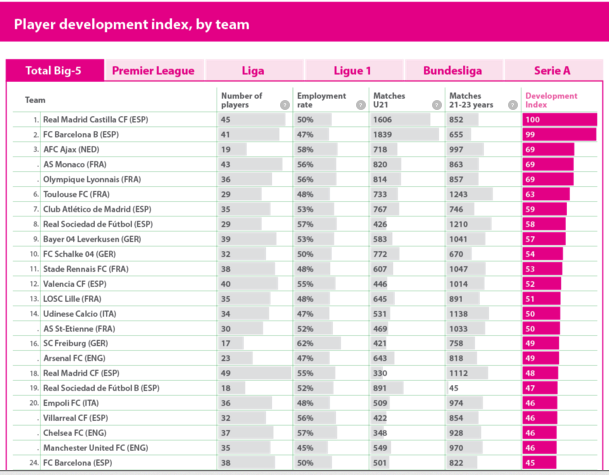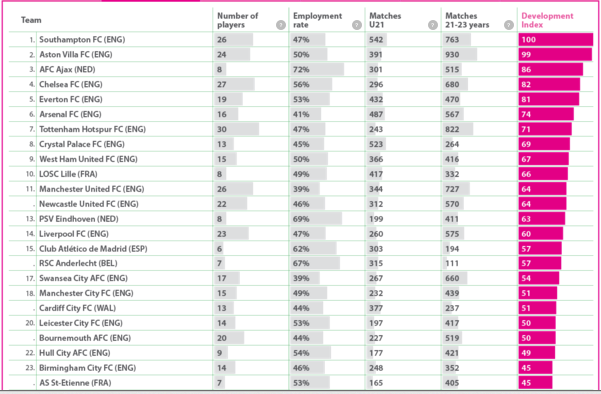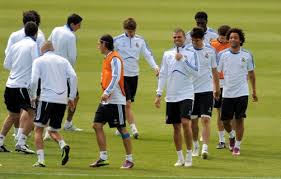By Paul Nicholson
November 26 – Real Madrid Castilla top the table of clubs that have developed players under the age of 23 and are playing in one of Europe’s Big-5 leagues. Looking just at the English Premier League, Southampton have developed most players, followed by Aston Villa and Ajax in third spot.
While Real may top the overall list, they are ranked second behind Barcelona B when just looking at Spain. Bayer Leverkusen top the ranking in Germany, Olympique Lyonnais in Ligue 1 and Empoli in Serie A.
The research and analysis compiled by the CIES Football Observatory indicates which clubs play the most important role in the development of current Big-5 league players.
The CIES reckon that the total of 2,165 footballers fielded so far by big-5 league teams have played in 1,276 clubs from the start of their career at adult level to their 23rd birthday.
The CIES player development index only takes into account domestic league games. A match played before the age of 21 is weighted double with respect to a game played between 21 and 23 years of age.
The fact that so many players have passed through the systems at Real Madrid and Barcelona and gone on to make it in the Big-5 leagues though never having played for these clubs’ first teams, points to a talent identification system that is working in Spain better than anywhere else.
While Saints top the Premier League list, they are behind Arsenal, Chelsea and Manchester United in the overall development list, reflecting the fact that most of their developed players have been home grown rather than imported, and have remained in the English league. In contrast to the others who have trawled international markets sucking up talent that, often, has returned to their home countries when failing, for whatever reason, to make the grade.
The CIES says that the player development index “could be particularly useful for leagues, national associations and international football governing bodies to set up systems of financial equalisation and/or reward mechanisms incentivising more teams to promote both the training and fielding of young talents.”
The data raises many questions not just about who is best at training and developing young players, but also about where those talents are drawn from, in what numbers and the welfare issues around those that fail to make the cut. The suspicion that some of Europe’s biggest clubs are running systems closer to child trafficking than youth development is only enhanced by this data.

Premier League player development ranking

To see the full ranking go to http://www.football-observatory.com/IMG/sites/b5wp/2015/126/en/
Contact the writer of this story at moc.l1745646453labto1745646453ofdlr1745646453owedi1745646453sni@n1745646453osloh1745646453cin.l1745646453uap1745646453

